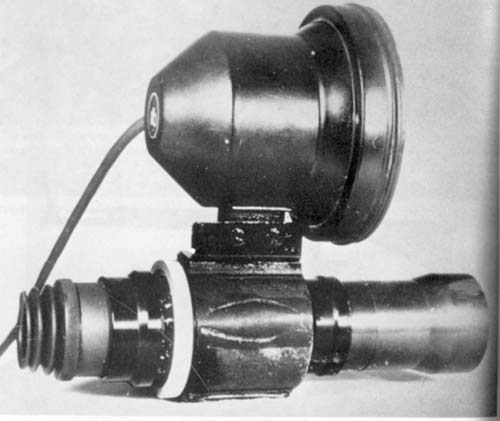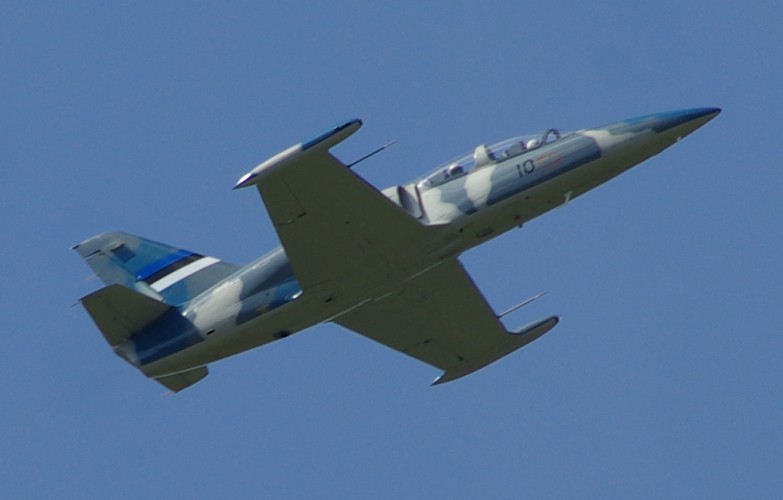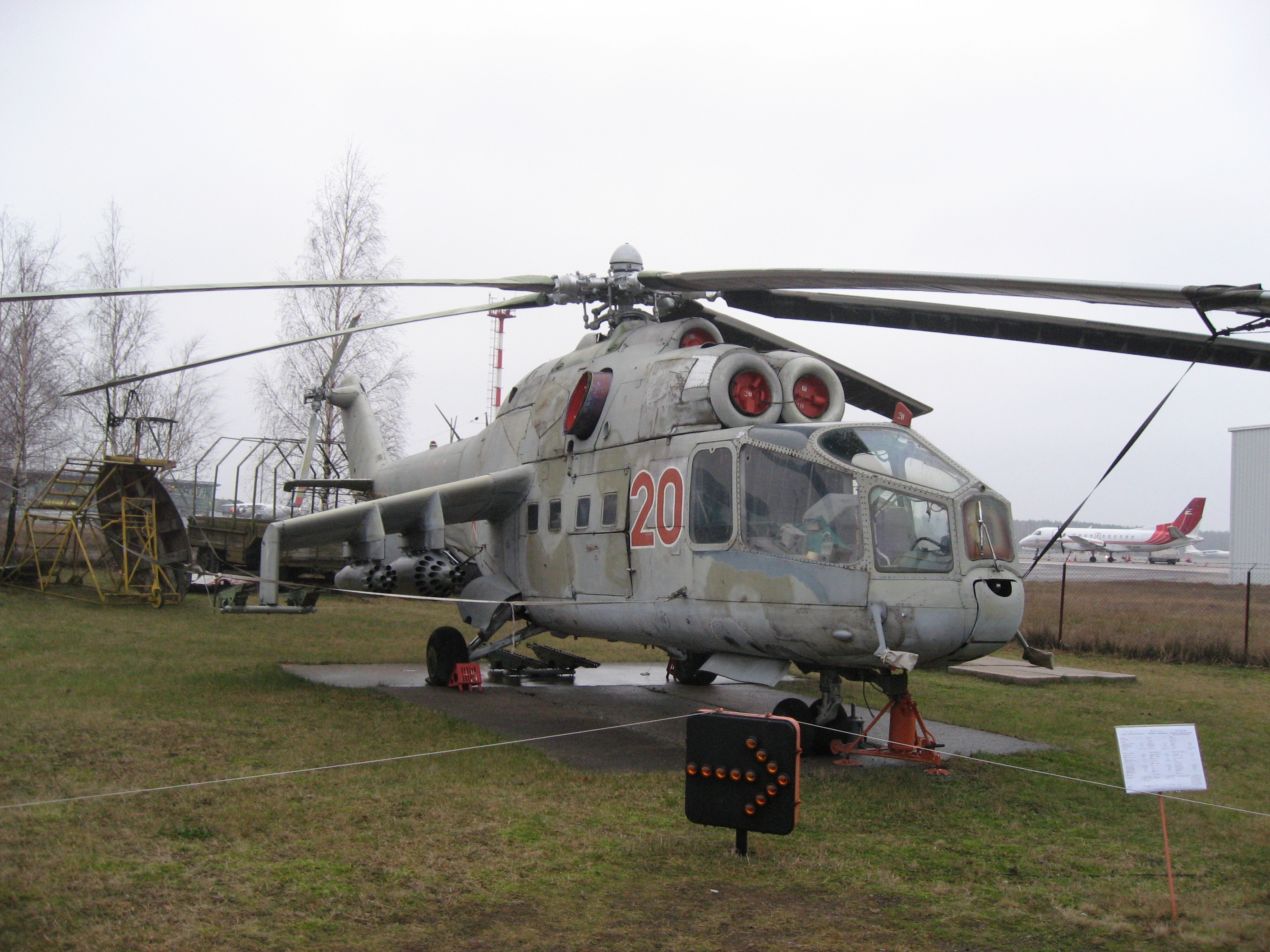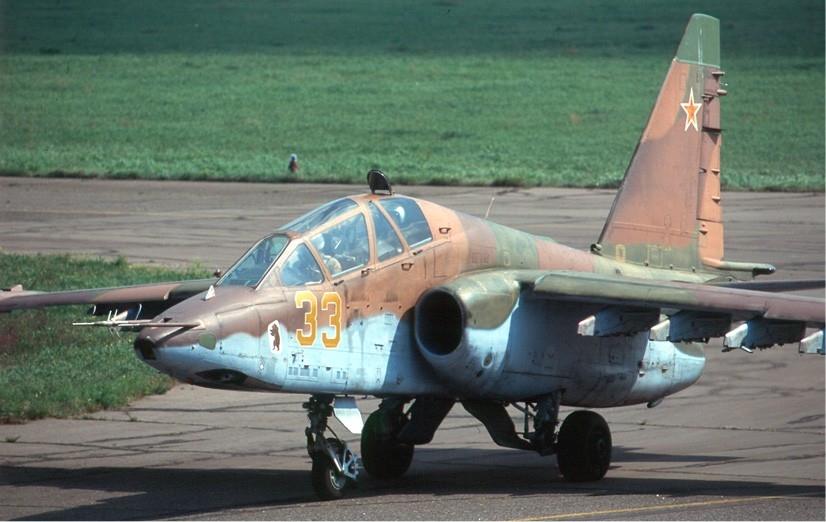|
Molniya R-60
The Molniya (now Vympel) R-60 (NATO reporting name: AA-8 "Aphid") is a short-range lightweight infrared homing air-to-air missile designed for use by Soviet fighter aircraft. It has been widely exported, and remains in service with the CIS and many other nations. History The R-60 was initially developed for the MiG-23. Work began on the weapon, under the bureau designation K-60 (''izdeliye'' 62), in the late 1960s. Series production began in 1973. It entered service with the designation R-60 (NATO reporting name "Aphid-A"). When introduced, the R-60 was one of the world's lightest and most agile air-to-air missiles, with a launch weight of . It has infrared guidance, with an uncooled ''Komar'' (Mosquito) seeker head. Control is by forward rudders with large rear fins. The distinctive canards on the nose, known as "destabilizers," serve to improve the rudders' efficiency at high angles of attack. The R-60 uses a small, tungsten expanding-rod surrounding a high explosive fra ... [...More Info...] [...Related Items...] OR: [Wikipedia] [Google] [Baidu] |
Air-to-air Missile
An air-to-air missile (AAM) is a missile fired from an aircraft for the purpose of destroying another aircraft (including unmanned aircraft such as cruise missiles). AAMs are typically powered by one or more rocket motors, usually solid-fuel rocket, solid fueled but sometimes liquid-fuel rocket, liquid fueled. Ramjet engines, as used on the Meteor (missile), Meteor, are emerging as propulsion that will enable future medium- to long-range missiles to maintain higher average speed across their engagement envelope. Air-to-air missiles are broadly put in two groups. Those designed to engage opposing aircraft at ranges of around 30 km to 40 km maximum are known as short-range or "within visual range" missiles (SRAAMs or WVRAAMs) and are sometimes called "dogfight" missiles because they are designed to optimize their agility rather than range. Most use infrared guidance and are called heat-seeking missiles. In contrast, medium- or long-range missiles (MRAAMs or LRAAMs), which ... [...More Info...] [...Related Items...] OR: [Wikipedia] [Google] [Baidu] |
Su-17
The Sukhoi Su-17 (''izdeliye'' S-32; NATO reporting name: Fitter) is a variable-sweep wing fighter-bomber developed for the Soviet military. Developed from the Sukhoi Su-7, the Su-17 was the first variable-sweep wing aircraft to enter Soviet service and featured updated avionics. The aircraft also has variants which were designed to be exported to non-Soviet states such as the Sukhoi Su-22 and the less popular Su-20. It was produced from 1967 to 1990. The Su-17/20/22 series had a long career and has been operated by many air forces, including those of the Russian Federation, former Soviet republics, former Warsaw Pact, countries in the Arab world, Angola, and Peru. The Russian Federation retired its fleet in 1998. Although the Su-17 was capable of carrying nuclear weapons, it was used in roles ranging from close-air support to ground attack. Development Shortly after the Su-7 fighter-bomber was put into service, the Sukhoi Design Bureau was ordered to develop a modernization ... [...More Info...] [...Related Items...] OR: [Wikipedia] [Google] [Baidu] |
Infrared Homing
Infrared homing is a Missile guidance#Passive homing, passive weapon guidance system which uses the infrared (IR) light emission from a target to track and follow it seamlessly. Missiles which use infrared seeking are often referred to as "heat-seekers" since infrared is radiated strongly by hot bodies. Many objects such as people, vehicle engines and aircraft generate and emit heat and so are especially visible in the infrared wavelengths of light compared to objects in the background. Infrared seekers are passive devices, which, unlike radar, provide no indication that they are tracking a target. That makes them suitable for sneak attacks during visual encounters or over longer ranges when they are used with a forward looking infrared or similar cueing system. Heat-seekers are extremely effective: 90% of all timeline of United States military operations, United States air combat losses between 1984 and 2009 were caused by infrared-homing missiles. They are, however, subject ... [...More Info...] [...Related Items...] OR: [Wikipedia] [Google] [Baidu] |
NATO Reporting Name
NATO uses a system of code names, called reporting names, to denote military aircraft and other equipment used by post-Soviet states, former Warsaw Pact countries, China, and other countries. The system assists military communications by providing short, one- or two-syllable names, as alternatives to the precise proper names, which may be easily confused under operational conditions or are unknown in the Western world. The assignment of reporting names is managed by the Five Eyes Air Force Interoperability Council (AFIC), previously known as the Air Standardization Coordinating Committee (ASCC), which is separate from NATO. Based in Washington DC, AFIC comprises representatives from the militaries of three NATO members (Canada, the United Kingdom and United States) and two non-NATO countries (Australia and New Zealand). When the system was introduced in the 1950s, reporting names also implicitly designated potentially hostile aircraft. However, since the end of the Cold War, ... [...More Info...] [...Related Items...] OR: [Wikipedia] [Google] [Baidu] |
J-22 Orao
The Soko J-22 Orao ( sr-cyr, text=Oрао, translation=eagle) is a Yugoslavian/ Serbian twin-engined, subsonic ground-attack and aerial reconnaissance aircraft. It was developed and built in collaboration by SOKO in Yugoslavia and by Avioane Craiova in neighbouring Romania, being known in the latter as the IAR-93 Vultur. The Orao was designed as either a single-seat main attack version or as a combat-capable twin-seat version, the latter being principally intended for advanced flight- and weapons-training duties. It was developed as a joint Yugoslav-Romanian project, known as YuRom, during the 1970s. Early ambitions to produce a supersonic fighter were scuppered by Britain's unwillingness to permit the desired engine to be license-produced in Eastern Europe. Further difficulties in fitting an afterburner to the older Rolls-Royce Viper also hindered development and the performance of early-build aircraft. First flying during November 1974, the resulting aircraft would equi ... [...More Info...] [...Related Items...] OR: [Wikipedia] [Google] [Baidu] |
Aero L-39 Albatros
The Aero L-39 Albatros is a high-performance jet trainer designed and produced by Aero Vodochody in the Czech Republic. In addition to performing basic and advanced pilot training, it has also flown combat missions in a light-attack role. Despite its manufacturing origin in the Warsaw Pact, the L-39 never received a NATO reporting name. The L-39 Albatros was designed during the 1960s as a successor to the Aero L-29 Delfín, an early jet-powered principal training aircraft. Performing its maiden flight on 4 November 1968, it became the first trainer aircraft in the world to be equipped with a turbofan powerplant. Quantity production of the L-39 Albatros proceeded in 1971; one year later, it was formally recognized by the majority of the Warsaw Pact countries as their preferred primary trainer. Accordingly, thousands of L39s would be produced for various military customers in Eastern Europe. Additionally, it was exported to a range of countries across the world both as a trainer ... [...More Info...] [...Related Items...] OR: [Wikipedia] [Google] [Baidu] |
BAE Systems Hawk
The BAE Systems Hawk is a British single-engine, subsonic, jet-powered advanced trainer aircraft. Its aluminum alloy fuselage is of conventional string-frame construction. It was first known as the Hawker Siddeley Hawk, and subsequently produced by its successor companies, British Aerospace and BAE Systems. It has been used in a training capacity and as a low-cost combat aircraft. Operators of the Hawk include the Royal Air Force (notably the Red Arrows display team) and several foreign military operators. The Hawk was produced at BAE Brough until 2020 in the UK, and continues to be produced under licence in India by Hindustan Aeronautics Limited (HAL), with over 1000 Hawks sold to 18 operators around the world. Development Origins In 1964, the Royal Air Force specified a requirement (Air Staff Target, AST, 362) for a new fast jet trainer to replace the Folland Gnat. The SEPECAT Jaguar was originally intended for this role, but it was soon realised that it would be too co ... [...More Info...] [...Related Items...] OR: [Wikipedia] [Google] [Baidu] |
Mi-24
The Mil Mi-24 (; NATO reporting name: Hind) is a large helicopter gunship, attack helicopter and low-capacity transport helicopter, troop transport with room for eight passengers. It is produced by Mil Moscow Helicopter Plant and was introduced by the Soviet Air Forces, Soviet Air Force in 1972. The helicopter is currently in use by 58 countries. In NATO circles, the export versions, Mi-25 and Mi-35, are denoted with a letter suffix as "Hind D" and "Hind E". Soviet pilots called the Mi-24 the "flying tank" (), a term used historically with the famous World War II Soviet Ilyushin Il-2#"The Flying tank", Il-2 ''Shturmovik'' armored ground attack aircraft. Other common unofficial nicknames were "Galina" (or "Galya"), "Crocodile" (), due to the helicopter's camouflage scheme, and "faceted glass, Drinking Glass" (), because of the flat glass plates that surround earlier Mi-24 variants' cockpits. Development During the early 1960s, it became apparent to Soviet designer Mikhail Mil th ... [...More Info...] [...Related Items...] OR: [Wikipedia] [Google] [Baidu] |
Yak-141
The Yakovlev Yak-141 (; NATO reporting name "Freestyle"), also known as the Yak-41, is a Soviet supersonic vertical takeoff/landing (VTOL) fighter aircraft designed by Yakovlev. Intended as a replacement for the Yak-38, it was designed as a supersonic fleet defence fighter capable of STOVL/VTOL operating from Soviet carriers. Four prototypes were built before the project's cancellation. Design and development Known internally as "Product 48", the Yak-41 was intended to replace the Yak-38 in service with the Soviet Navy. It went through significant design evolution. Configurations studied by Yakovlev included a twin-engine configuration, which was rejected due to asymmetric thrust issues in the event of an engine failure during landing, and a single-engined configuration, with lift jets to allow for vertical takeoff and landing, was selected. The engines were controlled digitally; manuverability during the hover was provided by reaction control jets, using excess airflow from ... [...More Info...] [...Related Items...] OR: [Wikipedia] [Google] [Baidu] |
Yak-38
The Yakovlev Yak-38 (; NATO reporting name: "Forger") was Soviet Naval Aviation's only operational VTOL strike fighter aircraft in addition to being its first operational carrier-based fixed-wing aircraft. It was developed specifically for, and served almost exclusively on, the s (heavy aircraft cruiser, aviation cruiser in Russian classification). Design and development Designed by the Yakovlev, A.S. Yakovlev Design Bureau, the first drawings showed a supersonic aircraft strongly resembling the Hawker P.1154 in study in the United Kingdom, but with two R27-300 engines. Supersonic performance would have implied many difficulties of development, and it was decided to initially develop a relatively simple aircraft limited to Mach Number, Mach 0.95. Although the Yak-38 and Yak-38M were developed from the land-based Yakovlev Yak-36, the aircraft had almost nothing in common. The prototype VM-01 was finished on 14 April 1970. Though outwardly similar to the British Hawker Siddel ... [...More Info...] [...Related Items...] OR: [Wikipedia] [Google] [Baidu] |
Yak-28
The Yakovlev Yak-28 () is a swept wing, turbojet-powered combat aircraft used by the Soviet Union. Produced initially as a tactical medium bomber, it was also manufactured in reconnaissance aircraft, reconnaissance, electronic warfare aircraft, electronic warfare, interceptor aircraft, interceptor, and trainer aircraft, trainer versions, known by the NATO reporting names Brewer, Brewer-E, Firebar, and Maestro respectively. Based on the Yak-129 prototype first flown on 5 March 1958, it began to enter service in 1964. Design and development The Yak-28 was firstTaylor 1976, pp. 520–521. seen by the West at the Tushino air show in 1961 in aviation, 1961. Western analysts initially believed it to be a Fighter aircraft, fighter rather than an attack aircraft—and a continuation of the Yakovlev Yak-25, Yak-25M—and it was designated "Flashlight". After its actual role was realized, the Yak-28 bomber series was redesignated "Brewer". The Yak-28 had a large mid-mounted wing, swept a ... [...More Info...] [...Related Items...] OR: [Wikipedia] [Google] [Baidu] |
Su-25
The Sukhoi Su-25 ''Grach'' ( ('' rook''); NATO reporting name: Frogfoot) is a subsonic, single-seat, twin-engine jet aircraft developed in the Soviet Union by Sukhoi. It was designed to provide close air support for Soviet Ground Forces. The first prototype made its maiden flight on 22 February 1975. After testing, the aircraft went into series production in 1978 in Tbilisi in the Georgian Soviet Socialist Republic. Early variants included the Su-25UB two-seat trainer, the Su-25BM for target-towing, and the Su-25K for export customers. Some aircraft were upgraded to the Su-25SM standard in 2012. The Su-25T and the Su-25TM (also known as the Su-39) were further developments, not produced in significant numbers. The Su-25, and the Su-34, were the only armoured, fixed-wing aircraft in production in 2007.Gordon and Dawes 2004. Su-25s are in service with Russia, other CIS members, and export customers. Production of the Su-25 ended in 2010 in Georgia. Attempts continue to be ma ... [...More Info...] [...Related Items...] OR: [Wikipedia] [Google] [Baidu] |









